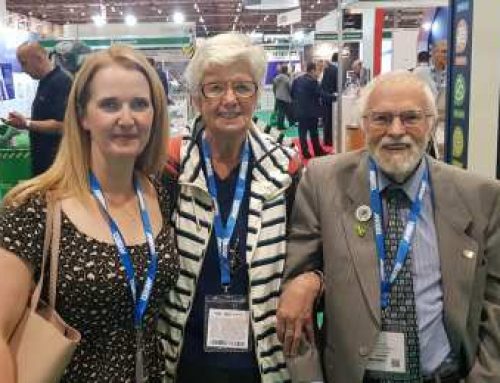
Yes Mesothelioma is classed as a rare disease which I find so hard to agree to. Asbestos has caused such a lot of health problems. I include a blog that I helped with by answering questions and sharing my story.
Asbestos related diseases characteristically develop over a long period of time. The first symptoms may not appear for anything from 10-50 years. Peak mortality rates are expected between the years 2010 and 2020.
The list of diseases include:
- Mesothelioma
- Asbestosis
- Lung Cancer
- Laryngeal Cancer
- Ovarian Cancer
- Testes Cancer
- Pleural plaques
- Pleural thickening
- Pleural effusion
Rare Disease Spotlight: Mesothelioma
Guest blog post by Tonya Nelson, Health Advocate,
The last day in February marks an awareness holiday called Rare Disease Day, a time dedicated to highlighting rare diseases. Although as a whole, rare diseases affect 30 million Americans, they often receive very little attention. These awareness holidays are the one time each year where the rare disease community can come together as a whole and shed some light on their struggles and triumphs. This year’s theme is centered around the importance of research, and for a rare cancer like mesothelioma, research and development of immunotherapy has been invaluable.
What is mesothelioma?
As is the case with many rare diseases, the public is largely unfamiliar with this rare cancer. Mesothelioma is often confused with lung cancer. Because 85% of diagnosed cases are pleural mesothelioma, which develops in the lining of the lungs, mesothelioma as a whole is often thought of as a lung cancer. However, mesothelioma can also form in the linings of other organs such as the heart or the abdomen. Additionally many of the symptoms of mesothelioma are the same for lung cancer.
What causes mesothelioma? The only known cause is exposure to a fibrous mineral called asbestos. When asbestos is disturbed, small fragments can detach themselves and become airborne. These fibers can be inhaled and become lodged in the lungs, scarring the tissue and leading to the development of tumors; however, it can take decades after asbestos exposure before symptoms arise. This makes it difficult for patients to pinpoint how exactly they were exposed. Asbestos was widely used in many different industries because of its unique properties–specifically a resistance to fire and heat and an overall durability. Unfortunately, it’s precisely the properties that make asbestos effective for industry that also make it dangerous. Asbestos cannot be broken down and disposed of by the human body, so instead, it remains trapped and results in cancers like mesothelioma.
One of the struggles with mesothelioma is that it’s exceptionally difficult to diagnose. Mesothelioma symptoms are nonspecific, meaning the symptoms could be the result of many different conditions. Symptoms include chest pain, fatigue, and shortness of breath – which can all be associated with more common ailments such as the flu. Additionally, these symptoms may not even be present until the cancer has significantly progressed.
Another challenge for this cancer is that although the dangers of asbestos are well documented and have been for decades, asbestos has not yet been banned in the United States.
What are the new developments in this field?
In early 2016, former Vice President Joe Biden announced the Cancer Moonshot, now known as Cancer Breakthroughs 2020, which is an initiative with the goal of eradicating cancer. Through investments of federal funding, this program supports cancer research that will hopefully lead to the development of better treatments. One of the largest pieces of this initiative is immunotherapy, which uses the body’s own immune system to combat cancer cells.
Immunotherapy is a promising treatment for mesothelioma patients. One drug in particular called Keytruda has already been approved for non-small cell lung cancer and head and neck squamous cell carcinoma. Keytruda is now being tested to see if it can also be an effective immunotherapy treatment for mesothelioma. Trial participants can attest to the success of the drug.
One patient named Mavis Nye decided she wanted to be part of a trial after four years of chemotherapy had failed to treat her cancer. Before the trial, Nye notes that she “was so near death. I couldn’t walk without a stick or walking frame.”
Nye says of the treatment, “I had the infusion in the afternoon that only took an hour altogether and then I was on my way home. That went on every three weeks for two years with a scan every three months. My mesothelioma shrunk and shrunk until I was completely responsive by the end of the trial. I have been in remission for 235 days.” (that is nowAnd Now It’s been 255 days since the Last Day of Keytruda! And Now It’s been 2825 days since the Day of Diagnosis! )
Why does it matter?
Many people with rare diseases are misdiagnosed, and even after a proper diagnosis, have severely limited treatment options. This is often on top of the news of a poor prognosis. Mesothelioma patients, for example, are typically given less than two years to live. This can make it difficult for patients to have hope for survival.
But immunotherapy and other developments in the treatment of cancer and rare diseases are changing all of that. For Mavis Nye, immunotherapy seemed like the “treatment of the future” and her best chance at regaining her health. She said “It was a breeze after chemotherapy. No sickness no neuropathy…You live life normally at last…” Nye did note that since immunotherapy is still in the clinical trial stage, it is not yet widely available. But hopefully the positive results continue and immunotherapy can become a viable option for more patients.
One-third of all new drugs that have been approved by the FDA are specifically for rare diseases. Hopefully, the development of better treatments will lead to longer life-expectancy and improved quality of life. This is the major source of hope that patients of rare diseases have been looking for. And none of this would be possible without the financial support and public awareness about the need for better treatments.
Rare Disease Day is one of the few times that these conditions are given the attention they need, making this holiday exceptionally important for patients. As a whole, there are more people with a rare disease than there are those affected by HIV, heart disease, or stroke. With such a large portion of the population being part of the rare disease community, it makes sense that these diseases gain more attention. Being able to raise awareness for rare diseases is what this holiday is all about!
https://www.massbio.org/news/blog/rare-disease-spotlight-mesothelioma-130545







Leave A Comment